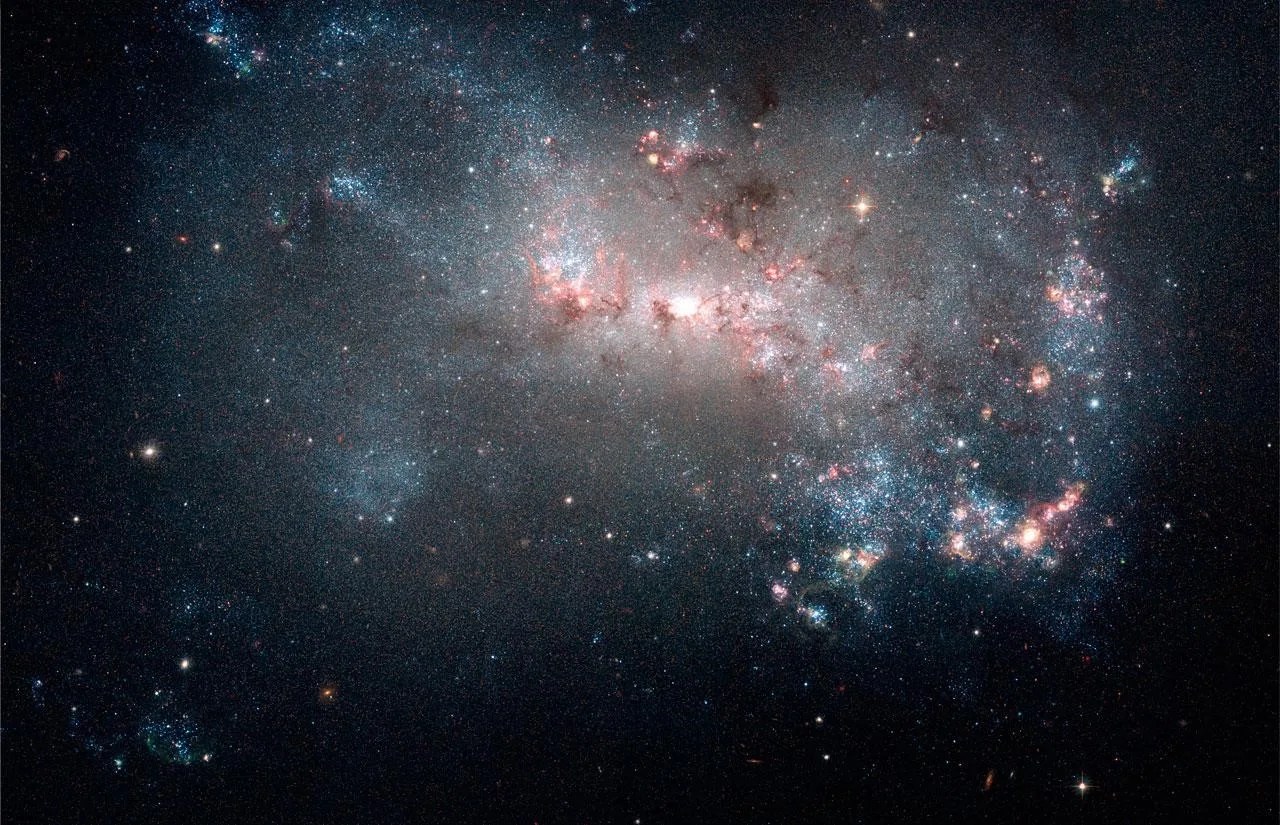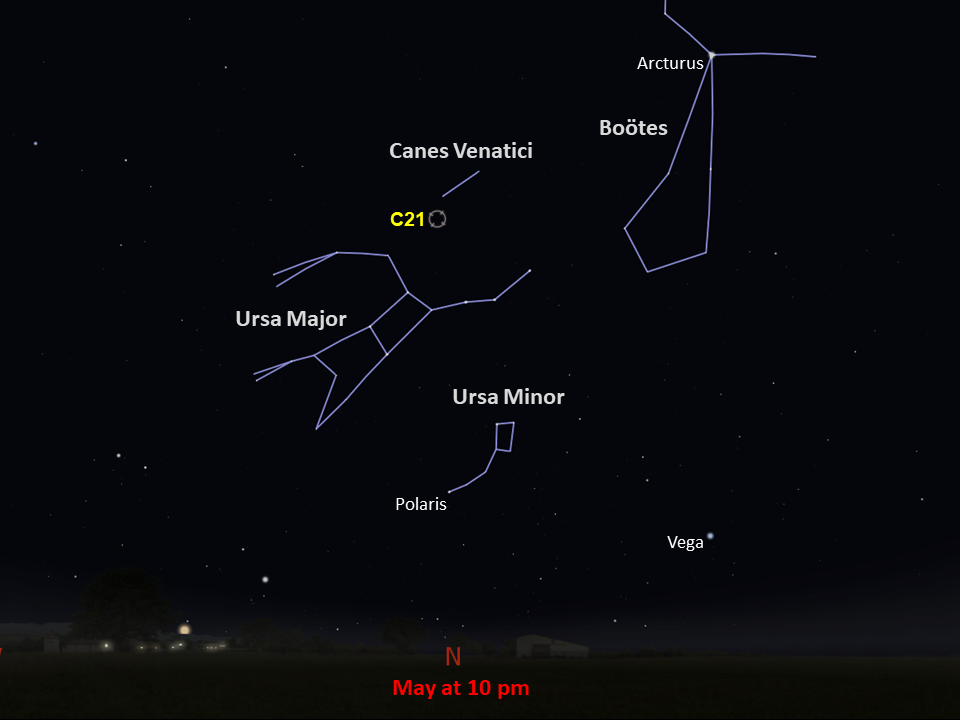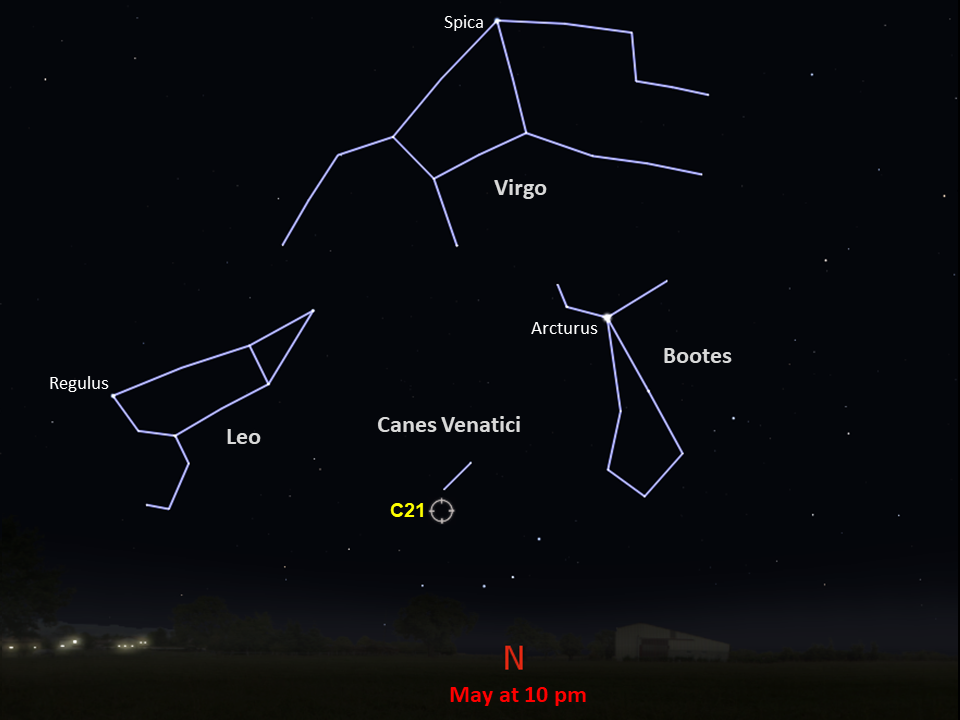Caldwell 21
Discovered in 1788 by astronomer William Herschel, Caldwell 21 is dwarf irregular galaxy bursting with forming stars.
Distance
10 million light-years
Apparent Magnitude
9.6
constellation
Canes Venatici
object type
Dwarf Irregular Galaxy
Caldwell 21, also known as NGC 4449, is an irregular dwarf galaxy located over 10 million light-years from Earth. This star-speckled Hubble image captures the chaotic, ongoing processes of stellar evolution within the galaxy.
In the dusty pink areas, brand new stars are flaring into life. Star formation activity is so widespread and intense here that astronomers refer to it as a starburst. While starbursts are typically confined to the central, more densely packed regions of galaxies, star-forming activity in Caldwell 21 reaches all the way out to the galaxy’s edge. The starburst may have been spurred by interactions with another galaxy, or perhaps several. Since it is close enough to be observed in great detail, Caldwell 21 provides the opportunity to investigate the processes that may have shaped galaxies in the early universe.
The bluish-white areas are populated by vibrant, young, massive stars. These high-mass stars are doomed to live short lives since they burn through their nuclear fuel so quickly. Once they run out of fuel, they will end their lives in violent explosions. Medium-mass stars like our Sun can expect lifetimes of roughly 10 billion years and go out much less dramatically, gradually puffing away their outer shells of gas into a beautiful nebula.
Hubble’s Advanced Camera for Surveys imaged Caldwell 21 in visible and infrared light. The observations are helping astronomers better understand the history of star formation in a starburst galaxy where interactions with another galaxy seem to have played a role.
Caldwell 21 stretches less than 20,000 light-years across space — a staggering distance, but only about one-fifth the diameter of our own galaxy, the Milky Way. Discovered in 1788 by astronomer William Herschel, Caldwell 21 is part of a group of galaxies found in the constellation Canes Venatici. With a magnitude of 9.6, it is fairly easy to spot in a telescope, and in a large telescope it’s a rewarding object, exhibiting a complex pattern of bright knots. It is best viewed in late spring from the Northern Hemisphere. Southern Hemisphere observers can find it low above the northern horizon in the autumn.
For more information about Hubble’s observations of Caldwell 21, see:
Stellar Fireworks Are Ablaze in Galaxy NGC 4449
Glossary
Dwarf Galaxy - A small, faint galaxy with only millions to a few billion stars.
Irregular Galaxy - A galaxy that lacks a defined shape and structure.
Magnitude - The brightness of an astronomical object, represented by a number; bright objects have low numbers on the magnitude scale, while dim objects have high numbers.
Nebula - An interstellar cloud of dust and gas; either a location where new stars are being forged or a cloud of material ejected into space by a dying star.
Starburst Galaxy - A galaxy that experiences an incredibly high rate of star formation, using up its reservoir of gas in a relatively short period of time.
Explore Hubble's Caldwell Catalog
The following pages contain some of Hubble’s best images of Caldwell objects.
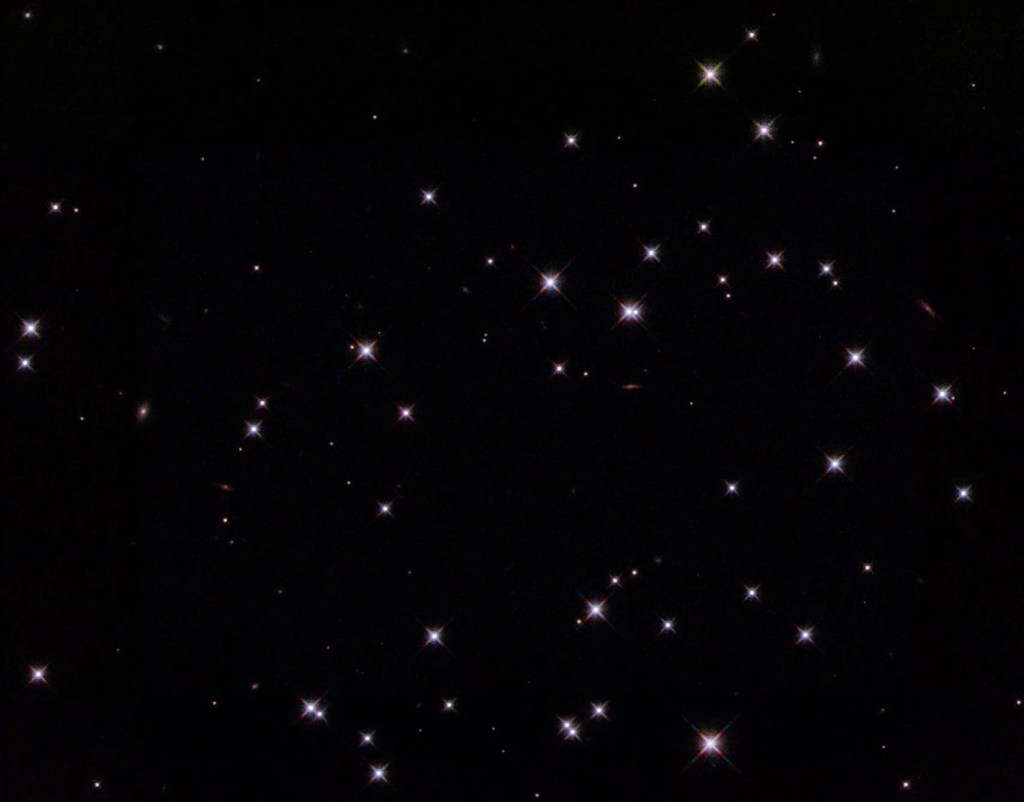
Also known as NGC 188, this group of stars formed from a large cloud of gas making the stars roughly…
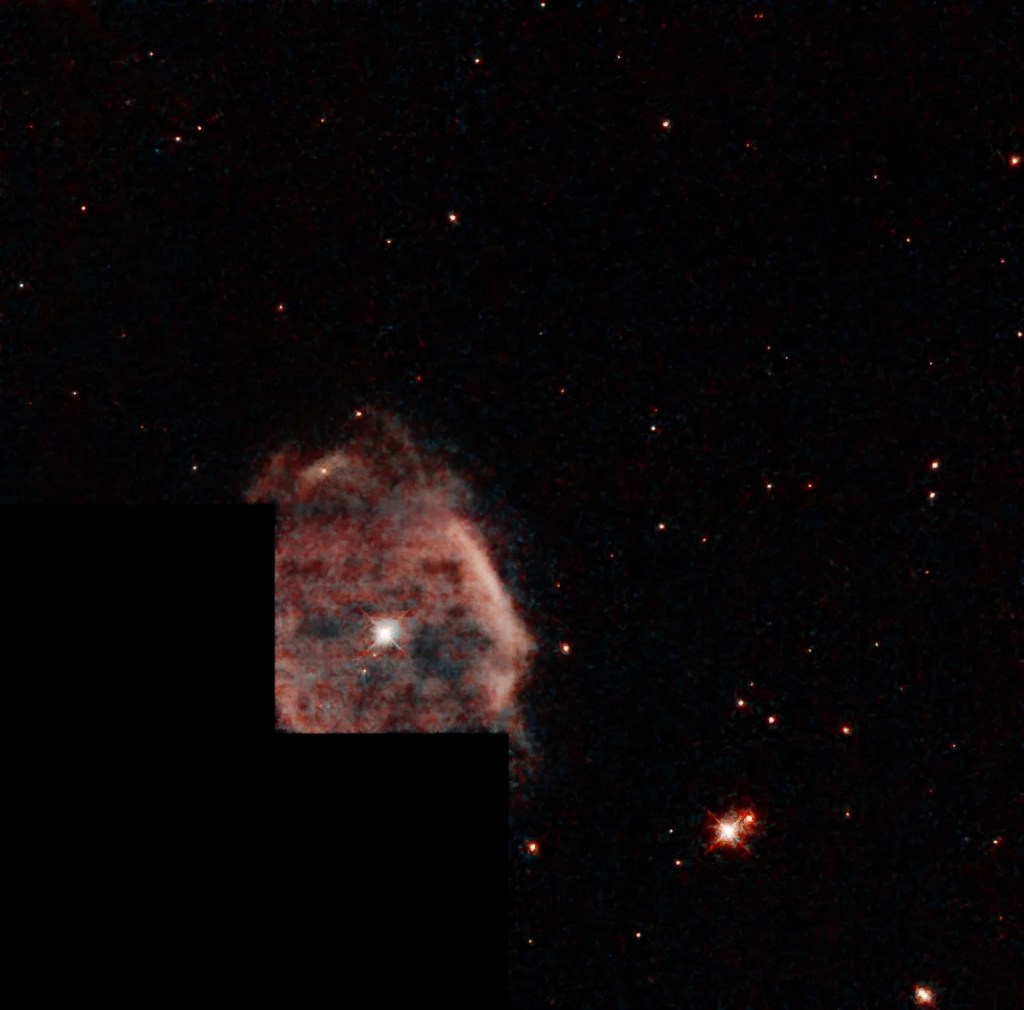
This shell of gas is expanding outward, away from the dying star within.
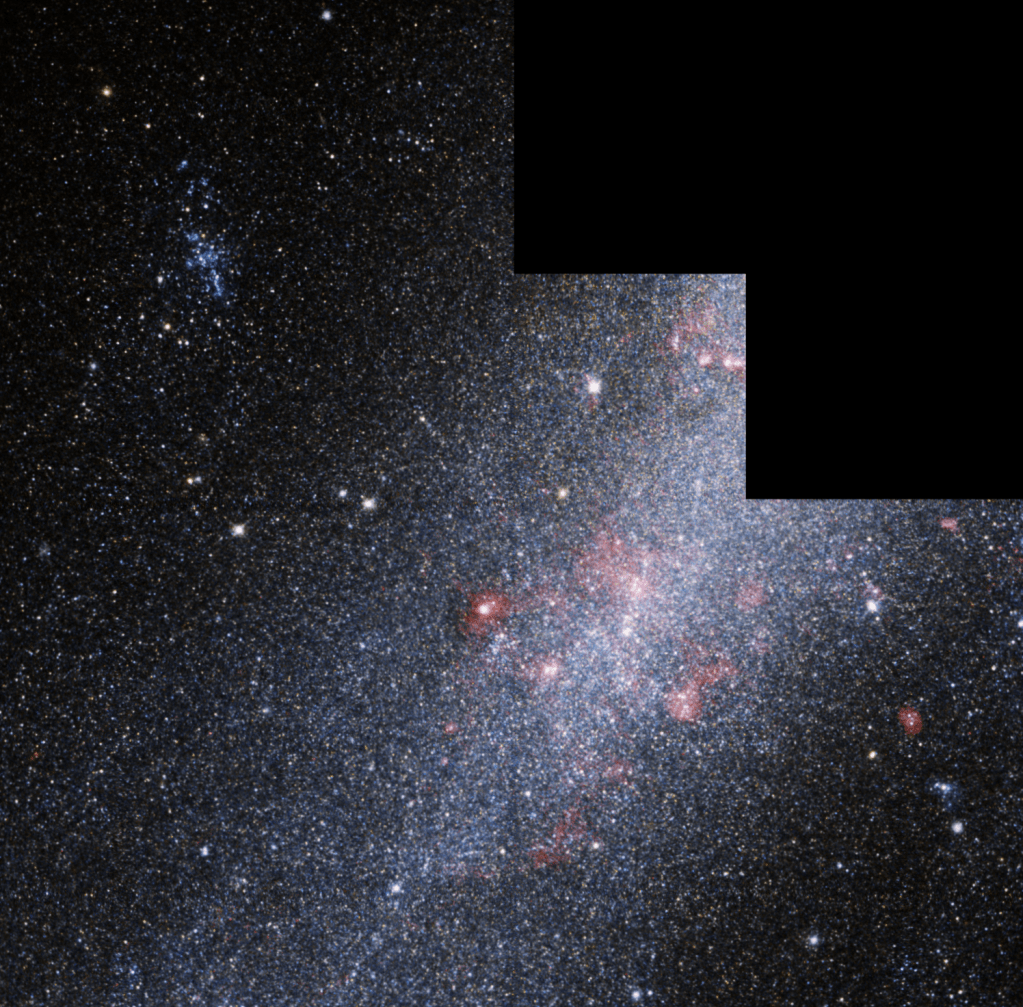
This barred spiral galaxy was first spotted by British astronomer William Herschel in April 1793 in the constellation Draco.



























